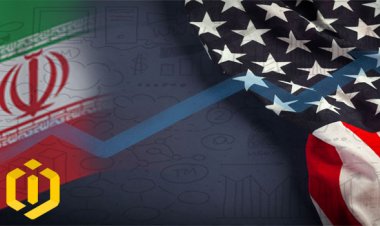Navigating the Legal Landscape: A Guide to U.S. Banking Laws and Regulations

The U.S. banking industry operates within a complex legal and regulatory framework designed to ensure the safety and soundness of the financial system, protect consumers, and prevent financial crimes. Understanding the key banking laws and regulations is essential for banks and financial institutions to operate in compliance and mitigate potential risks.
1. The Dodd-Frank Wall Street Reform and Consumer Protection Act (2010)
The Dodd-Frank Act was enacted in response to the 2008 financial crisis and brought about significant changes to the regulatory landscape for financial institutions. The Act aims to reduce systemic risk, promote transparency, and enhance consumer protection. Key provisions include:
- Creation of the Financial Stability Oversight Council (FSOC): The FSOC monitors systemic risks and can designate non-bank financial institutions as systemically important, subjecting them to enhanced regulation.
- Establishment of the Consumer Financial Protection Bureau (CFPB): The CFPB protects consumers from unfair, deceptive, or abusive practices in the financial industry.
- Volcker Rule: Prohibits banks from engaging in proprietary trading and limits their investments in hedge funds and private equity funds.
- Stress Tests: Requires banks to undergo regular stress tests to assess their resilience to adverse economic conditions.
2. The Federal Deposit Insurance Act (1933)
The FDIA established the Federal Deposit Insurance Corporation (FDIC), which provides deposit insurance to depositors in member banks. This insurance coverage protects consumers up to specified limits and promotes confidence in the banking system. The FDIC also has the authority to resolve failed banks and manage the orderly liquidation of their assets.
3. The Bank Secrecy Act (1970)
The BSA is the primary anti-money laundering (AML) law in the United States. It requires banks and other financial institutions to implement AML programs to detect and report suspicious transactions. The BSA also established the Financial Crimes Enforcement Network (FinCEN), which collects and analyzes financial transaction data to combat money laundering and terrorist financing.
4. The Truth in Lending Act (1968)
The TILA requires lenders to provide clear and accurate disclosures about loan terms and costs to consumers. This law aims to promote fair and transparent lending practices and protect consumers from deceptive or misleading information.
5. The Equal Credit Opportunity Act (1974)
The ECOA prohibits discrimination in lending based on race, color, religion, national origin, sex, marital status, age, or receipt of public assistance. This law ensures that all credit applicants are treated fairly and have equal access to credit.
6. The Fair Credit Reporting Act (1970)
The FCRA regulates the collection, dissemination, and use of consumer credit information by credit reporting agencies. This law protects consumers' privacy and ensures the accuracy and fairness of credit reports.
7. The Sarbanes-Oxley Act (2002)
The Sarbanes-Oxley Act was enacted in response to corporate accounting scandals and aims to enhance corporate governance and financial reporting. Key provisions include:
- Establishment of the Public Company Accounting Oversight Board (PCAOB): The PCAOB oversees the audits of public companies and sets auditing standards.
- Increased penalties for financial fraud: The Act imposes stricter penalties for corporate executives who engage in financial misconduct.
- Enhanced corporate governance: The Act requires companies to strengthen their internal controls and improve their financial reporting practices.
8. The USA PATRIOT Act (2001)
The USA PATRIOT Act was enacted after the 9/11 terrorist attacks and expanded the government's surveillance and investigative powers to combat terrorism. Key provisions include:
- Increased information sharing: The Act facilitates the sharing of financial and other information between law enforcement agencies and financial institutions to detect and prevent terrorist financing.
- Enhanced customer due diligence: Banks and other financial institutions are required to conduct enhanced due diligence on customers who may pose a higher risk of terrorist financing.
Navigating the legal landscape of U.S. banking laws and regulations is essential for banks and financial institutions to operate in compliance and manage risks effectively. These laws and regulations aim to protect consumers, prevent financial crimes, and maintain the safety and soundness of the financial system. By understanding and adhering to these regulations, banks can contribute to the stability and integrity of the U.S. banking industry.
Author: Pooyan Ghamari, Swiss Economist & Visionary

 content-team
content-team 






















